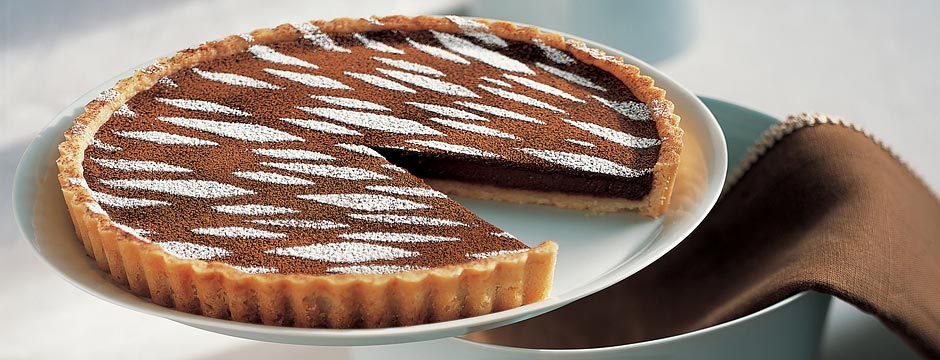Cocoa Curiosity
March 31st, 2011 by Alice Medrich

March 31st, 2011 by Alice Medrich
March 20th, 2011 by Alice Medrich
March 19th, 2011 by Alice Medrich
(Revised from Chewy Gooey Crispy Crunchy Melt-In-Your-Mouth Cookies)
Makes 1 generous cup
Ingredients:
½ vanilla bean
1 quart whole milk
1 tablespoon butter
½ cup (3.5 ounces) sugar
½ teaspoon baking soda
Pinch of salt (optional but really good…)
Set a fine or medium fine strainer over a heatproof bowl.
With a sharp paring knife, cut the vanilla bean in half lengthwise. In a large heavy bottomed pot (that holds at least 6-quarts) combine the vanilla bean pieces with the milk, butter, sugar, baking soda, and salt. Bring the mixture to a simmer, stirring frequently, especially around the sides of the pot. At first the milk will foam dramatically, and it may curdle, but will eventually smooth out. Continue to cook, frequently stirring in any foam on top and sweeping the sides, corners, and all over the bottom of the pot with a silicone spatula. Keep the mixture boiling briskly but not furiously without letting it overflow. The mixture will gradually turn a deep caramel color as it thickens. This may take from 60-90 minutes, depending on your stove and the size of your pot. The mixture becomes especially bubbly and foamy in the last stages of cooking: adjust the heat so that it bubbles actively but not violently and stir it very frequently, and then constantly (especially around the sides and corners of the pot) until done. It is done when the mixture is reduced to a generous cup and a little spooned over an ice cube thickens to a soft gel. Scrape the sauce into the strainer and stir and press it through. Be sure to scrape the sauce from underneath the strainer into the bowl. Cool the sauce slightly, then taste and adjust the salt. You can put the spent pieces of vanilla bean back into the mixture if you like. They will either keep on giving flavor or at least look as though they are. May be kept in a covered container in the refrigerator for at least 1 month
March 9th, 2011 by Alice Medrich
March 5th, 2011 by Alice Medrich
Last week my dear friend E set out for Berkeley from the North Coast to continue the celebration of her 75th. As usual, she stopped at the Booneville hotel to break the drive. But the Booneville was booked, so they tucked her in at the Toll House Inn 10 minutes up the hill on the road to Ukiah. She headed south again the following morning, after de-icing car door handles and scooping up the bottle of Alexander Valley chardonnay (Handley 2007) gifted by the hotel. Neither of us would have chosen the chardonnay, but even the persnickety can be tempted by free wine. Good thing.
POACHED EGGS FOR TWO W/ ASPARAGUS, BROWN BUTTER, FRESH TARRAGON, AND CALIFORNIA CHARDONNAY
Bring the asparagus water back to a simmer. Break four very fresh farm eggs into the water, in a clockwise pattern. Turn the burner OFF, cover the pan, and set the toaster oven for 3 minutes. Meanwhile uncork an expensive bottle of champagne and discover that it is not very good. When the toaster oven beeps, divide the toast between two plates and drizzle them with a little of the brown butter. Use a slotted spoon to remove the first egg, draining the excess water by resting the spoon on a folded paper towel before sliding the egg onto a slice of toast. Repeat, scooping each egg from the water in the order it was added. Garnish plates with asparagus and drizzle more brown butter over the eggs and asparagus. Top with tarragon leaves, pinches of flaky salt, and grinds of pepper.
Serve a slightly oaky, buttery, bottle of Alexander Valley Chardonnay (which turns out to be an even better choice than the champagne would have been…) Linger over breakfast as long as possible.
PS Enjoy left over brown butter on toast with salt and tarragon leaves for several mornings thereafter and don't forget to return the champagne to the store.